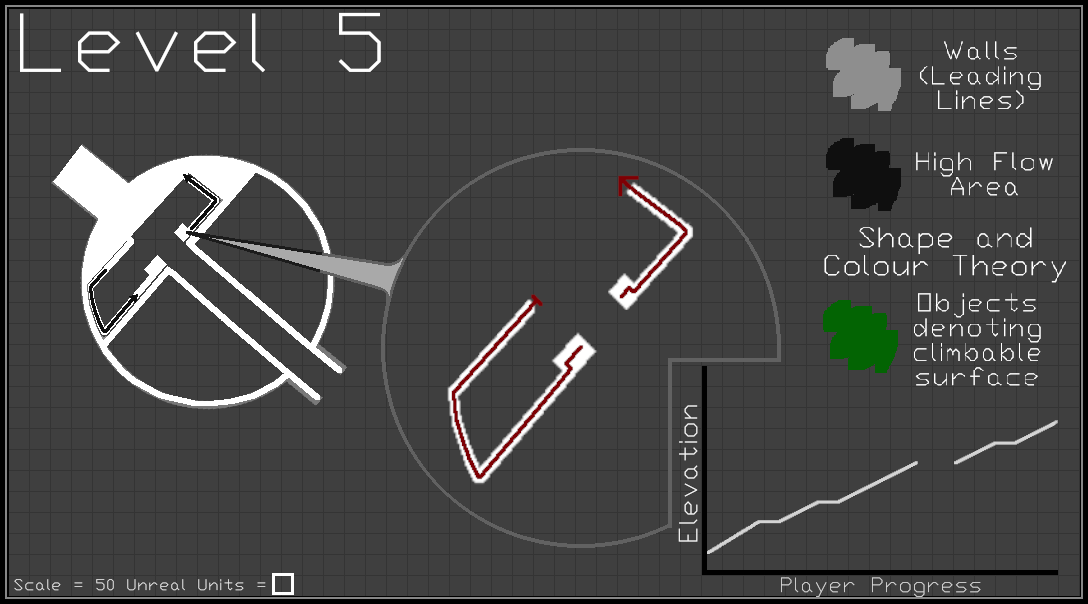The image below shows my initial concept for a Fortnite level created in UEFN. The design is inspired by escape rooms and the player must progress through a series of these rooms to reach the end.
The diagram on the right shows how I imagined an individual space would look.
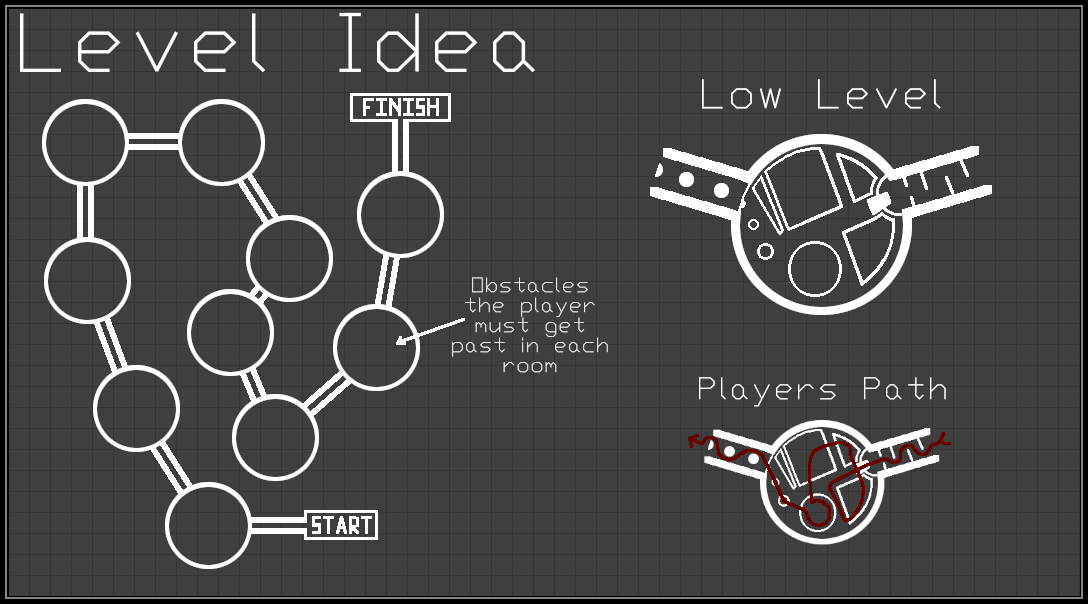
This was my initial concept for how the player might navigate Stage 1. I aimed to keep the layout simple and intuitive, The player choosing an incorrect path wouldn't result in a harsh penalty, allowing for smooth and forgiving exploration of the mechanics.
This image highlights the stage in more detail, showcasing the design techniques I used to guide players in the right direction. I chose to annotate flow because the player's goal is to complete the level as quickly as possible. Areas within each stage that felt fast to move through tended to get a reaction from the player. I identified this high-flow area during playtesting.
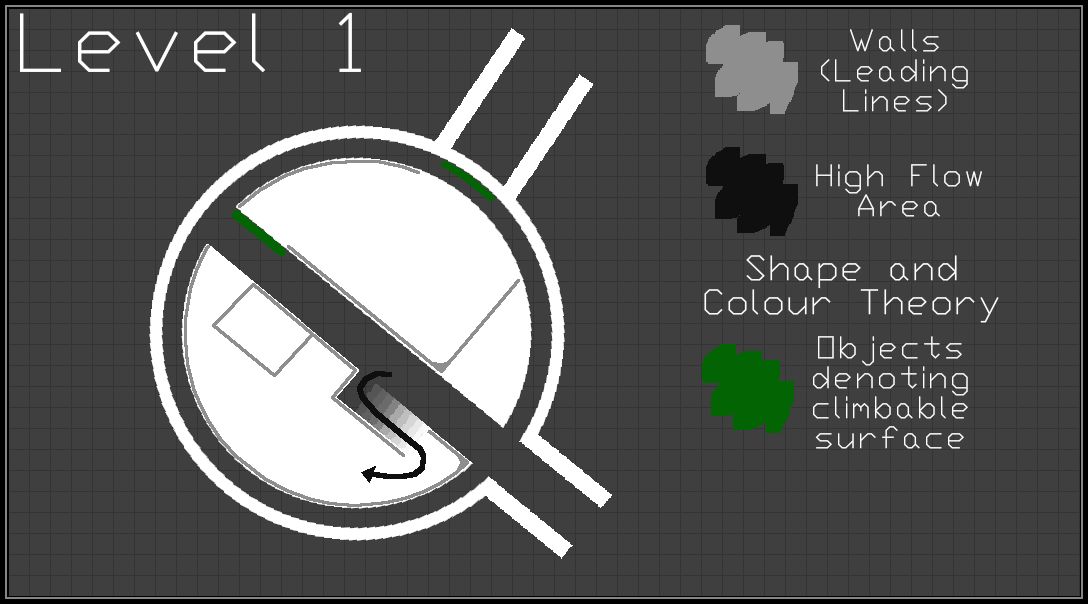
In this level, the player must navigate through the environment to reach and jump onto a ledge. If they miss the jump, they'll fall but can backtrack through the level to return to the starting point and try again.
The image below highlights the player's path through the level. This level immediately challenges the player's expectations by guiding them to the right, an initially unnatural direction. Going straight leads downhill, which may feel more intuitive at first, but often causes players to reconsider and turn back. The ledge the player must jump to is clearly communicated through shape language, using a ramp to suggest it as the next step.
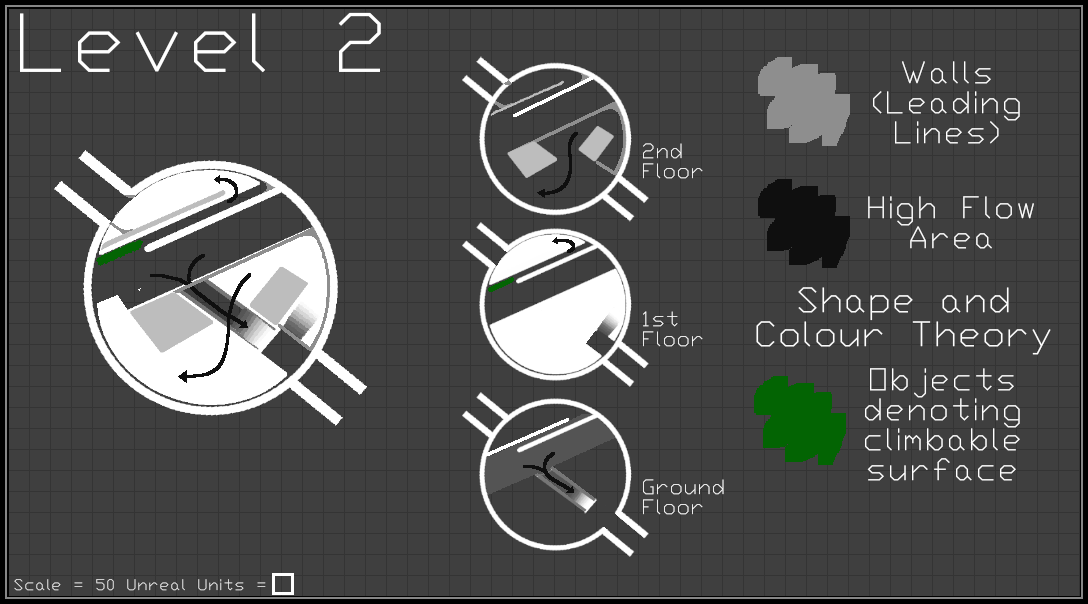
Level 3 once again subverts player expectations by requiring them to move towards the far end of the level before beginning their ascent toward the exit. After reaching the top, the player must navigate a maze-like section to esacpe the room, adding an extra layer of challenge and spatial exploration.
In the previous design, there was empty space the player could enter, but it didn't bring them any closer to the end of the room. To address this, I redesigned the second half of the level, as shown here. In this iteration, once the player reaches about three-quarters of the way through, the path becomes more straightforward. By simply following the corridor, they can't go wrong. This version also better communicates the layout of the first half of the level, making it much clearer that the player needs to backtrack to reach the second section.
I also added leading lines to help guide the player in the right direction. This not only makes the level easier to navigate but also gives it a cleaner appearance, with fewer sharp edges.
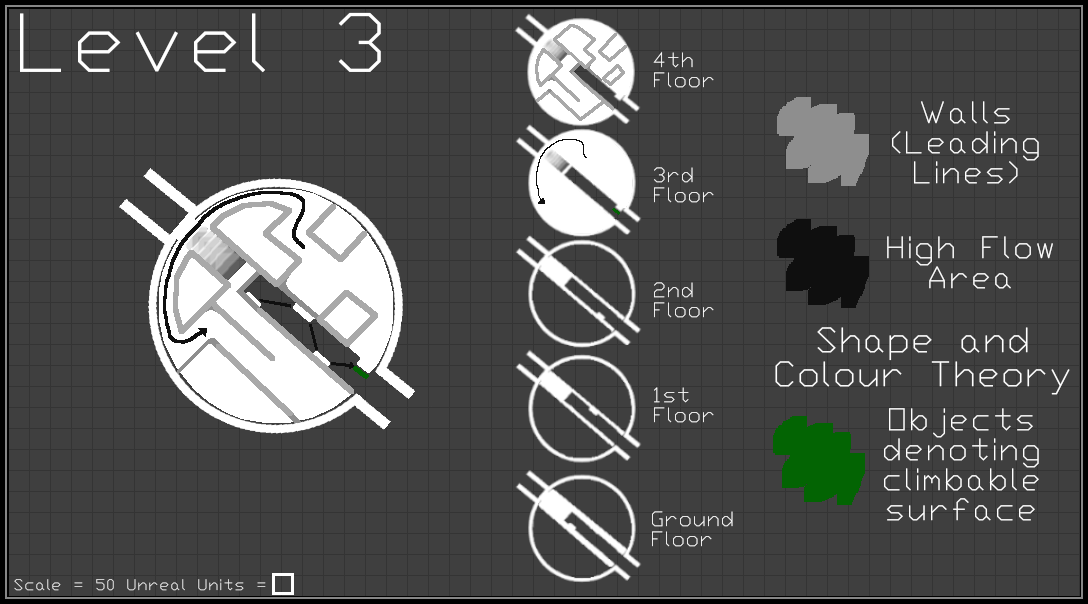
This is the first room where the player is required to use their vault ability to enter one of the buildings. From there, they must navigate through the interior to reach the first floor of the level. The use of vaulting is then reinforced through a series of half walls, guiding the player toward the room's exit while establishing it as a core mechanic in the player's ability set.
This image highlights what the player must do as well as reinforcing the leading lines and highflow areas throughout the level. This image also highlights the jump the player must do once they are out of the interior of the buildings. This jump has them move accross the area they have just moved through so I guess it is the opposite of a vista. Showing the player where they have come from rather than where they are going. A vault should then be used to reach the exit, this reinforces what the player learnt in the last level.
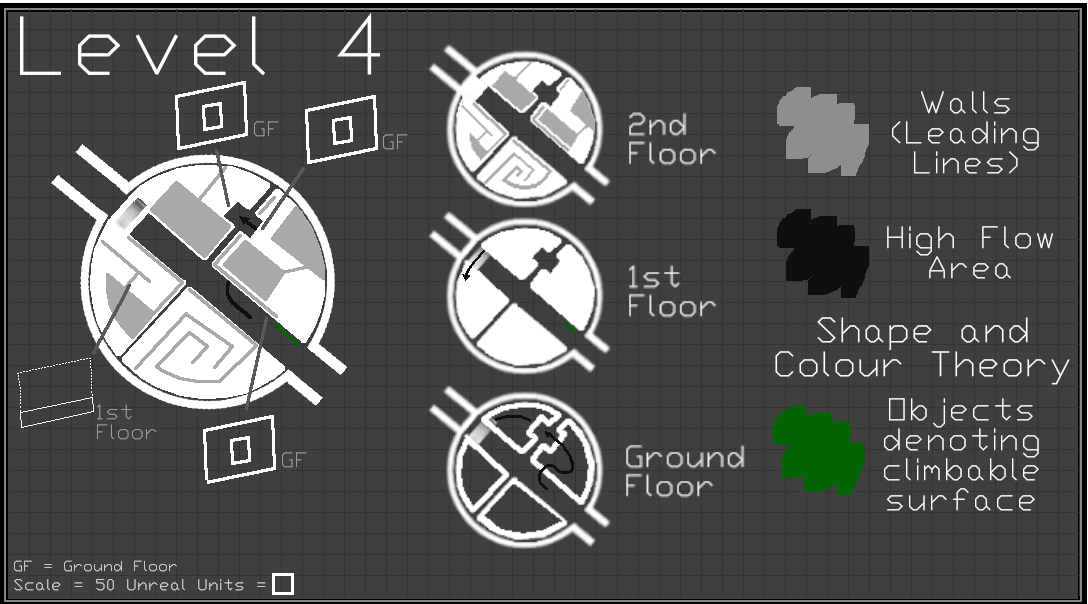
I wanted to give the player some time to reflect in the final room of this level. The player should move around the outside of the playable area to move upwards. There is a jump halfway up, this is the main challenge of the level.
The graph in the bottom corner of this image shows how the player moves vertically in this room. The gap in the line represents the jump in the level. The black arrows on this image show the high flow areas, the areas where the player is most aware of their movement through the level.
